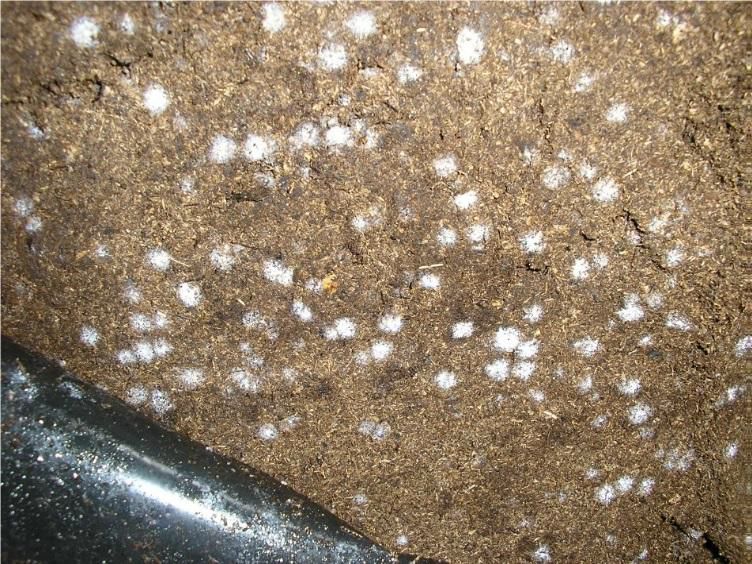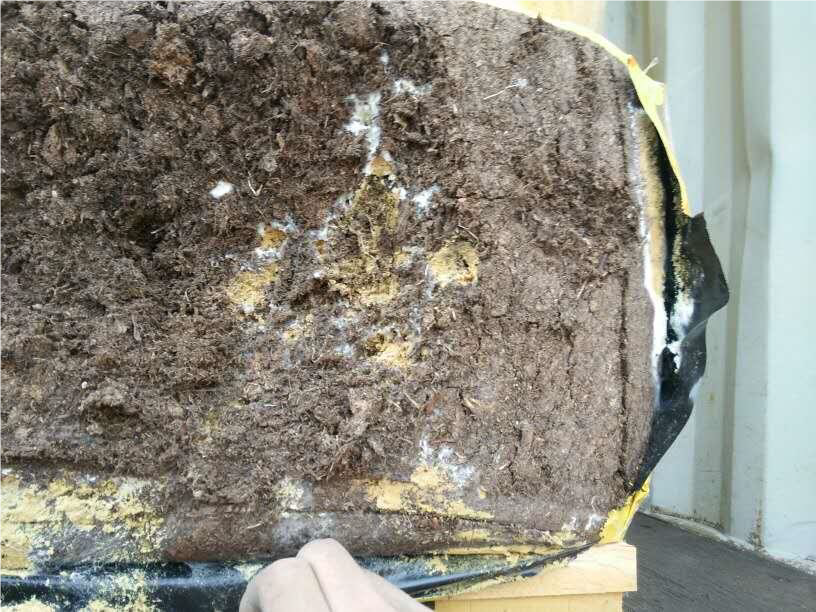If the humidity is high, mold can grow on almost any organic material. Therefore it’s no surprise that mold could emerge on growing media as well. However these types of mold are part of the Saprophytic fungi. Saprophytic fungi are a group of fungi that break down dead plant material. They are an essential part of the ecosystem within the growing media and are not pathogenic or harmful to plants or people in any way. Research shows they can even positively influence plant growth and resilience.
Positive effects of molds
When these molds are active during the growing stages they can aid plants in multiple ways. For example, saprophytic fungi break down complex organic molecules within the growing media, and while doing so, release plant-available nutrients like nitrogen and phosphorus. In addition, some types are known to supplant plant pathogens in the root zones, which protects the crop. They actually do this so well that some types of saprophytic fungi are commonly available as microbial fungicides.
Negative effects of molds
Basically the only negative effect of the presence of these molds is that they grow in unsightly colonies that can sometimes spread a bad odour. Mold colonies usually form between the growing media and the packaging when it is stored in higher temperatures. Under these circumstances water can collect between the growing media and the packaging, creating an ideal environment for these molds to sporulate.
What to do if molds are present?
Although there is no need to worry if you spot any of these molds on your growing media, as it will not negatively impact plants, we can imagine you would like to limit growth. Mold growth is merely a visual issue. If you see fungi in your growing media, we recommend to loosen the compressed material and mix them thoroughly. This will break up fungal growth.
Once the growing media are taken into use for cultivation all fungal growth will disappear and should not reappear during further growing stages. Make sure to monitor your plants and allow the surface of the growing media to dry out periodically to reduce the relative humidity of the growing media.
In rare cases, under specific circumstances molds may take up some of the available nitrogen that was added as a starter fertiliser within the growing media. It’s always important to monitor your plants as they grow, and where necessary apply more fertiliser.
Common types of saprophytic fungi
Now you know these types of molds are nothing to be worried about, we would like to tell you a little more about the two most common types: species of the genus Trichoderma and Peziza.
Trichoderma
Fungi of this species are known to inhibit the growth of pathogenic fungi. As this group of fungi have been shown to prevent attacks from plant pathogenic microorganisms during cultivation, Trichoderma species are now commonly used in a number of commercial fungicides.
Trichoderma can therefore be considered to be a beneficial type of fungi which provides a source of natura protection to plants.
Spores of Trichoderma can be naturally found in peat, and under certain conditions, when the moisture, temperature and pH is right, the spores can germinate and the Trichoderma fungi start to grow. While the presence of Trichoderma is usually not visible to the human eye, sometimes, when water condenses between product and packaging, Trichoderma can be seen as a white growth on the surface of the growing media.

White spots of Trichoderma mould on growing media
Peziza ostracoderma
This is a type of saprophytic fungi that looks like a yellow dust. It is commonly known as cinnamon or peat mould. This type of mold is never found on living materials or plants, and can only be found on the surface of the growing medium. It is not harmful in any way.

